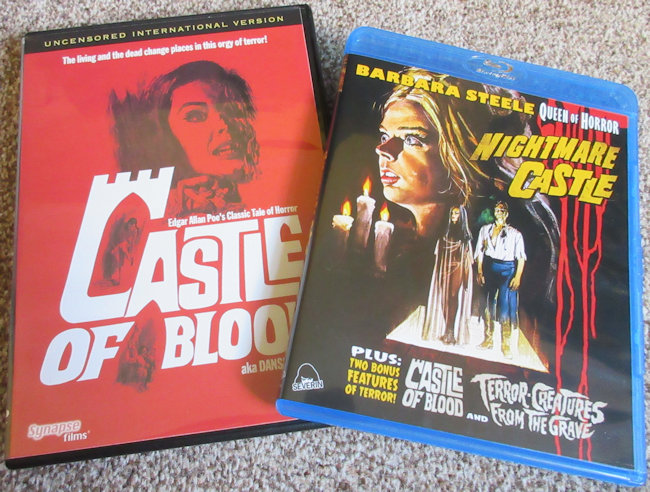Frank Agrama's Dawn of the Mummy (1981), whatever one might think about it, at the very least momentarily broke the genre away from its traditional bandaged wrappings - sorry - trappings... It starts with the usual sort of prologue, ancient Egypt natch, where a curse is laid down for some unwitting future generation to fall foul of. Forwarding to modern day, a gold digging American has blown open the tomb protected by the curse. Stumbling into the picture is a group of fashion models with their culturally inconsiderate photographer, who locates the same tomb that the gold-digger has just blown open. He decides to bring the models into the tomb for an exclusive shoot, the digger putting up with them until they hopefully move on to allow him to scavenge what he can. What the fools don't realise is that the heat of their powerful lighting equipment reactivates a mummified corpse, and thus the curse is unbound.
The film is littered with dopey characters, from the fashion models to the superstitious locals, and of course the photographer alongside his greedy kindred spirit, the gold-digger. This provides the viewer with some fun, and some gratification as most of them receive some justice. Standing the film out from its sub-genre predecessors is a leaning towards gore, with several nicely executed killings (helping it to become the victim of overly zealous authorities in 80s Britain, who blamed anything but themselves for a crumbling country - these days it gets a 15 certificate!). Connected to this is the lethal nature of the mummies themselves - rather than shuffling along slowly with one useless arm, these guys are pretty ruthless, and numerous. A standout sequence has them all rising from their sandy graves one night, and this indirectly leads to the best segment of the film: the bloody destruction of the village as the mummies descend on it to enact violent, relentless havoc. It's not a great film but is an enjoyable night in, being both derivative and original is some twisted way.
Treasured Films put out a deluxe Blu-ray edition here in the UK, attempting to compile the most complete, adequately watchable version they can. It appears that the negatives are not available, so you have to limit your expectations quite a bit, particularly when it becomes apparent that the sources vary greatly (it looks like they used a combination of cinema prints and possibly even tapes to bring everything together). Certain sequences are excellent with plenty of detail and good rendering of colour, whereas others are quite horrific with fleetingly hefty digital processing being used in attempt to level everything together. I wouldn't say the worst offending scenes are excessive, but it does mean the viewer has to accept an uneven experience. If, like me, you are used to seeing former presentations of this, you may be quite pleased for the most part. Having had this on tape and seen it many further times thanks to the old Anchor Bay UK DVD (see picture at bottom), the new disc is leagues beyond. The DVD at least included two ways to view, either 1.33:1 or 1.78:1 (the Treasured disc is an improved 1.66:1 presentation), however, was very messy and almost looked like a VHS port itself in terms of its detail and emaciated colour.
The (English language) audio probably fairs better on the new disc, being generally consistent and delivering reasonable dynamics for the period/budget. Added to that are a couple of audio commentaries, two featurettes from Stephen Thrower and Darrell Buxton, who between them cover a range of mummy films over the ages (although, oddly, talk very little about Dawn of the Mummy itself), and a nicely researched piece by Eugenio Ercolani, mainly about Agrama (including some of his more controversial activities as a businessman). Ercolani is also involved with the fairly long talk with surviving cinematographer Sergio Rubini.
If you pick up the deluxe version the film is packaged is a sturdy outer box adorned with fresh artwork, and contains a booklet of essays coupled with a collection of cards. A webstore exclusive also bundled an attractive poster, Egyptian 'scroll', and metal pin (see photograph above), though these don't fit in the deluxe box. So, uneven presentation aside, this is a forgivable effort considering what the guys purportedly had to work with, and also a brave move when it's possible many labels might not have wanted to handle the project because of the source limitations. It's the best I've ever seen it, and value is added with a really appealing package all round that happens to look great on the shelf (next to its very inspiration, Dawn of the Dead, of course).







